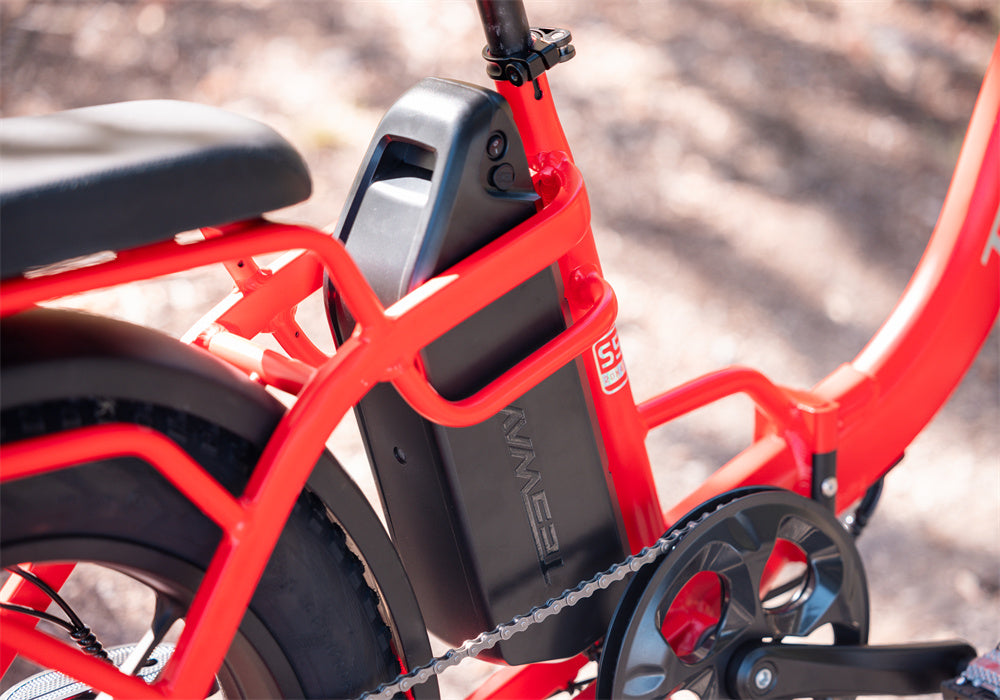E-bikes have become increasingly popular as a versatile and eco-friendly alternative to traditional bicycles and cars.
Whether you're commuting, exploring trails, or looking for an easier ride, an e-bike can be a great investment.
Tips 1: Different Types of E-Bikes
City e-bikes are ideal for urban commuting, offering a comfortable and efficient ride through busy streets.
Mountain e-bikes are built for off-road trails, featuring robust frames and powerful motors to tackle steep inclines and rough terrains.
Hybrid e-bikes provide a versatile option, suitable for both city rides and light off-road adventures, combining the best features of city and mountain e-bikes.
Folding e-bikes are compact and portable, making them perfect for travelers and those with limited storage space, allowing easy transportation and storage without sacrificing performance.
Tips 2: Battery and Range
The battery is a critical component of an e-bike, influencing how far you can travel on a single charge. Battery capacity, measured in watt-hours (Wh), determines the range.
Factors such as terrain, rider weight, and the level of pedal assist used affect the range. If you frequently ride on hilly terrains or carry extra weight, you might need a higher-capacity battery to ensure you don't run out of power mid-ride.
It's essential to understand your typical usage to choose an e-bike with a battery that suits your needs.
Tips 3: Motor Types and Power
The type and power of the motor significantly impact the riding experience. Hub motors, located in the wheel hub, are common due to their simplicity and lower cost.
Mid-drive motors, positioned at the bike's center, offer better weight distribution and efficiency, especially for climbing hills and navigating rough terrain.
The power of the motor, measured in watts (W), determines its strength and speed capabilities.
Higher wattage motors offer more power but may be subject to legal restrictions in some regions. Balancing power needs with legal requirements is crucial to ensure compliance with local regulations.
Tips 4: Legal Regulations and Restrictions
Different regions have varying laws regarding e-bikes, and it is crucial to understand these regulations before making a purchase.
Speed limits are typically capped at 20 to 28 miles per hour (32 to 45 kilometers per hour), depending on the region. Power restrictions often limit e-bikes to 750 watts.
Additionally, some areas may require licenses or specific helmet types for e-bike riders. Familiarizing yourself with local regulations will help you choose an e-bike that complies with the law and avoid potential fines or legal issues.
Tips 5: Cost and Budget Considerations
E-bikes can vary significantly in price, from entry-level models around $1,000 to high-end models exceeding $5,000. When budgeting for an e-bike, factor in additional costs such as battery replacements, repairs, and regular maintenance.
E-bikes can offer significant savings by reducing transportation costs, particularly if they replace car trips or public transportation expenses. Evaluating your budget and long-term savings can help determine the right e-bike for your financial situation
Tips 6: Quality and Durability
Investing in a quality e-bike ensures longevity and reliability. The frame material, such as aluminum, carbon fiber, or steel, affects the bike's weight and durability.
High-quality components, including brakes, gears, and tires, contribute to the bike's overall performance and safety.
Researching reputable brands known for their durability and customer support can provide peace of mind.
Additionally, consider the warranty offered by the manufacturer, as a solid warranty can protect your investment and cover potential repairs.
Tips 7: Riding Experience and Comfort
Comfort is key for an enjoyable e-bike ride. Test riding different models is essential to find the best fit. Look for e-bikes with adjustable seats and handlebars to match your height and riding style. Suspension systems can also enhance comfort, especially if you plan on riding on rough terrains. Test riding allows you to experience the bike's handling, weight distribution, and overall feel, ensuring it meets your comfort and performance expectations.
Tips 8: Maintenance and Repair
Regular maintenance keeps your e-bike in top condition, extending its lifespan and ensuring a safe ride. Routine checks should include the battery, tires, brakes, and motor. Opting for a brand with easily available spare parts can simplify maintenance and repairs. Additionally, check for local shops that can service your e-bike, as having professional support nearby can save time and hassle when issues arise.
Conclusion
Buying an e-bike is a significant investment, and making an informed decision is crucial. By understanding the different types of e-bikes, their components, legal considerations, and maintenance needs, you can choose an e-bike that fits your lifestyle and budget. Whether you're commuting, exploring new trails, or seeking an easier ride, an e-bike can offer freedom and enjoyment. Take the time to research and test ride different models to ensure you find the perfect e-bike for your needs. Enjoy the ride and the many benefits that come with owning an e-bike!
FAQs
Do I need a license to ride an e-bike?Licensing requirements vary by location. Some regions do not require a license, while others may for certain classes of e-bikes.
Can I ride an e-bike in the rain?
Most e-bikes are designed to be water-resistant and can be ridden in light rain, but it’s best to avoid heavy downpours and to dry the bike thoroughly afterwards.
How do I choose the right e-bike battery?
Consider the battery capacity (measured in watt-hours), your typical ride distance, and the terrain you’ll be riding on.







Share:
Solutions for Ebike PAS Always Going Full Speed
Seniors Bike Guide | 5 Best E-Bikes for Over 70's Under $1000